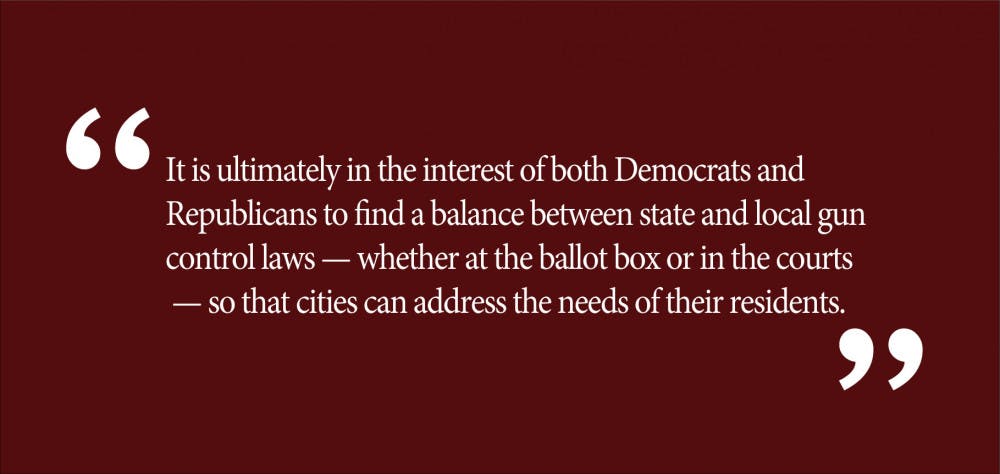In the 1800s, Cleveland secured its place as one of the nation’s great commercial centers, linked to arteries of trade like the Erie Canal. In the early 20th century, Ohio’s state capital conducted “The Columbus Experiment,” implementing cutting-edge water treatment techniques that are still in use today. Soon after, cities like Akron become industrial powerhouses that stimulated the country’s economy. The cities of my home state have always been devoted to tackling society’s most pressing issues.
Today, the cities of Ohio seek to continue this trend by grappling with one of America’s most contentious political issues: gun violence. But their efforts have yet to prove successful.
On August 4, 2019, ten innocent people lost their lives at the hands of a gunman in Dayton, Ohio. Beyond the flashy headlines, the problem of gun violence in Ohio’s cities runs deeper: homicide rates in Cleveland and Cincinnati put them comfortably in the top ten among our nation’s cities. Across the Buckeye State, guns took a total of 1,589 lives in 2017 — an all-time high.
The biggest obstacle Ohioan cities must overcome to reduce gun-related deaths is not violent video games, or even easy access to firearms. The biggest obstacle is their own state government.
In 2006, the Ohio legislature passed House Bill 347. This bill nullified all city-level ordinances that imposed greater restrictions on gun rights than those imposed by the state itself. By leaving local governments unable to implement their own solutions — or any solutions — to a crisis of survival, HB 347 is permitting violence, thereby setting a dangerous political precedent. This law needs to go, along with the dozens of similar laws in states across the country.
Mass shootings are often followed by emotional debates that pit gun rights against calls for greater regulation of firearms. In the 43 states where so-called “preemption laws” such as HB 347 exist, however, such back-and-forth is essentially moot. Because of these laws, “thoughts and prayers” — criticized by many as a cop-out reaction from Republican lawmakers — are quite literally some of the only ways that local officials can legally respond in the face of tragedy.
The inability of local officials to react to gun violence is problematic for two reasons. The first is that citizens are becoming frustrated with what they view as a failure by their local officials to curb an endemic problem. This perceived failure likely makes voters lose faith in their city governments and as a result develop a political apathy that is detrimental to democracy. Politically apathetic citizens often turn out in low numbers to vote in local elections. When people vote less, it creates a vicious cycle in which extreme voices gain a disproportionate influence in elections.
The second reason is the human cost. HB 347 wiped out over 80 local gun restrictions in my state alone. In Cleveland, because of this intrusive statute, a once longstanding firearm registry no longer exists. Likewise, Cincinnati’s laws to ban bump stocks were shot down in Ohio’s courts. In short, HB 347 undid years of progress made in limiting dangerous individuals’ access to guns, and there are tangible effects: Without the authority to enforce gun-control measures, Ohioan cities have been unable to provide localized solutions to their unique problems with gun violence.
Americans, on the right and the left, have always valued the independence of local government. It is ultimately in the interest of both Democrats and Republicans to find a balance between state and local gun control laws — whether at the ballot box or in the courts — so that cities can address the needs of their residents.
Arjun Shanmugam ’23 can be reached at arjun_shanmugam@brown.edu. Please send responses to this opinion to letters@browndailyherald.com and op-eds to opinions@browndailyherald.com.



